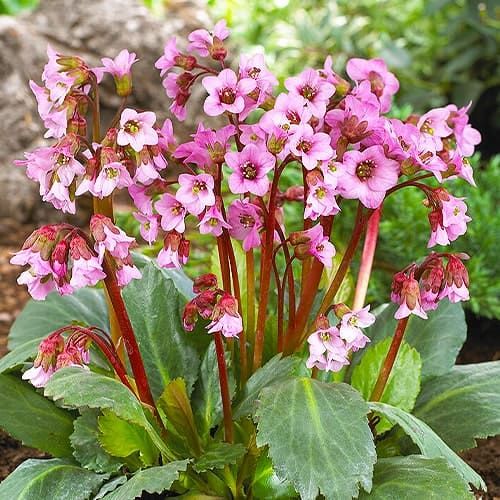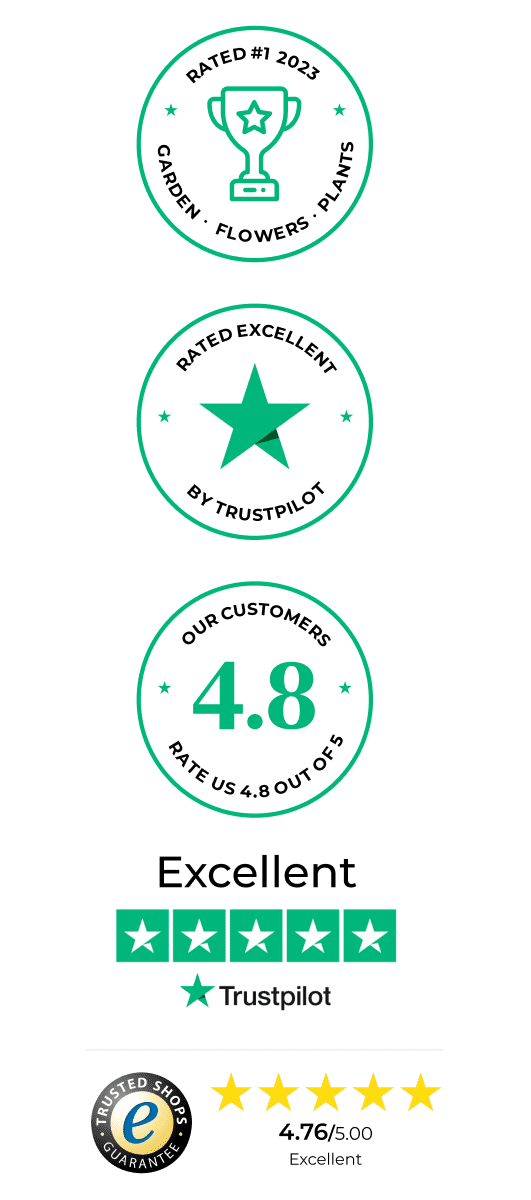Bergenia (Pig Squeak)
Bergenia (Pig Squeak)
Last Reviews
Discover the Loveliness of Bergenia (Pig Squeak)
Bergenia, commonly known as "elephant's ears" or "pigsqueak," is a versatile and resilient perennial plant that adds beauty and charm to any garden landscape. With its glossy, leathery leaves and clusters of delicate flowers, Bergenia offers year-round interest and requires minimal maintenance, making it a favorite among gardeners.
How to Choose the Best Bergenia Plants for Sale
When selecting Bergenia plants for sale for your garden, consider factors such as the variety, size, and health of the plants. Look for well-established plants with vibrant foliage and healthy roots. Ensure they are free from pests and diseases. Opt for reputable nurseries or online stores with a wide selection of Bergenia varieties to choose from.
Types and Varieties of Bergenia
Bergenia comes in various types and varieties, each offering unique characteristics and attributes. Some popular varieties include:
- Bergenia cordifolia (Heartleaf Bergenia): This variety features large, heart-shaped leaves that turn bronze-red in winter. It produces clusters of pink or white flowers in early spring, adding a pop of color to the garden.
- Bergenia 'Bressingham Ruby': Known for its striking dark red flowers, 'Bressingham Ruby' is a compact variety that blooms profusely in late spring to early summer. Its glossy, leathery foliage provides year-round interest.
- Bergenia 'Winter Glow': As the name suggests, 'Winter Glow' offers vibrant red foliage during the winter months, making it a standout in the garden. Its pink flowers appear in spring, contrasting beautifully with the foliage.
- Bergenia 'Rotblum': This compact variety features delicate pink flowers that resemble dragonflies hovering above the foliage. Its glossy green leaves turn shades of red and purple in colder weather, adding to its ornamental appeal.
Growing Bergenia: Planting and Care
Planting Bergenia is relatively straightforward, but proper care is essential for optimal growth and blooming. Choose a location with partial shade to full sun and well-drained soil. When planting, ensure the crown of the plant is slightly above the soil level to prevent rotting. Water regularly, especially during dry spells, and fertilize lightly in spring to encourage healthy growth.
Preparing the Soil for Bergenia
Before planting your Dutch bulbs, it's essential to prepare the soil properly. Bergenia thrives in well-drained, fertile soil with a slightly acidic to neutral pH. Incorporate organic matter such as compost or aged manure into the soil to improve its texture and nutrient content. Ensure good drainage to prevent waterlogging, which can lead to root rot and other problems.
Planting Bergenia Bulbs
When planting these Netherlands bulbs, choose a location that receives partial to full shade, although some varieties can tolerate more sun. Dig a hole slightly larger than the root ball and place the plant at the same depth as it was in its container. Backfill the hole with soil and water thoroughly to settle the roots. Space multiple plants according to their mature spread to allow for adequate air circulation and growth.
Caring for Your Bergenia
Bergenia is a low-maintenance plant that requires minimal care once established. Water newly planted Bergenia regularly to keep the soil consistently moist but not waterlogged. Once established, Bergenia is relatively drought-tolerant and can withstand periods of dryness. Apply a balanced fertilizer in spring to promote healthy growth and flowering. Remove spent flowers to encourage continuous blooming and tidy appearance.
Tips for Extending the Blooming Season of Bergenia
To prolong the blooming season of Bergenia follow this tips:
1. Deadhead spent flowers: Regularly remove faded blooms to encourage the plant to produce new flower buds continuously.
2. Provide adequate water: Keep the soil consistently moist, especially during hot and dry periods, to promote healthy growth and prolonged blooming.
3. Apply fertilizer: Feed Bergenia with a balanced fertilizer during the growing season to support robust flower production.
4. Mulch the soil: Apply a layer of organic mulch around the base of the plant to retain moisture, regulate soil temperature, and suppress weed growth, all of which can help prolong the blooming period.
5. Protect from extreme heat: Shield Bergenia from direct afternoon sunlight and provide shade during heatwaves to prevent stress and prolong flowering.
Implementing these tips can help ensure a longer and more abundant blooming season for your Bergenia plants.
Buy Bergenia from Holland
For high-quality Bergenia plants, consider purchasing from reputable suppliers in Holland. Holland is renowned for its expertise in cultivating top-quality bulbs and plants. Buy Bergenia bulbs today and add a touch of elegance to your garden. By sourcing Bergenia from Holland, you can be assured of superior quality and a wide range of varieties to choose from.
Order Bergenia bulbs today and bring the beauty and elegance of this versatile perennial to your garden. With our reliable shipping and excellent customer service, you can trust that your Bergenia plants will arrive healthy and ready to thrive in your garden landscape.














